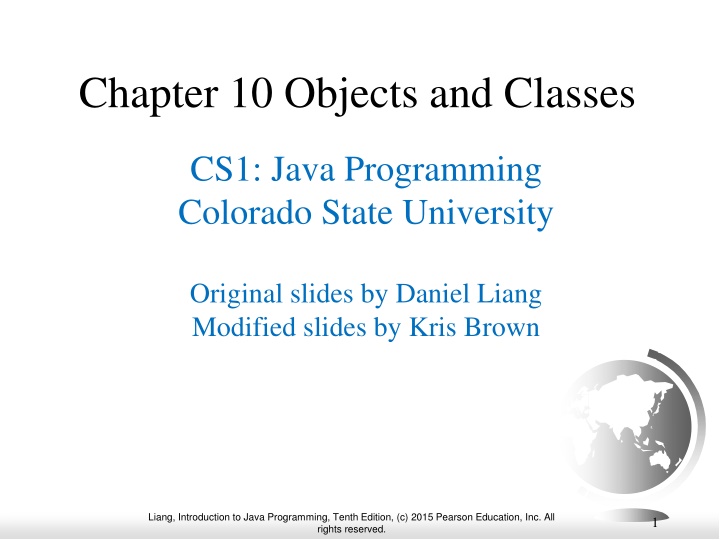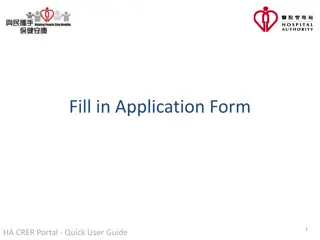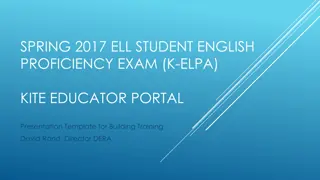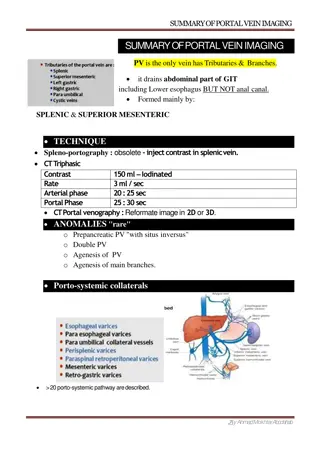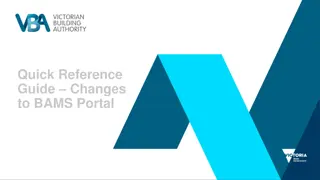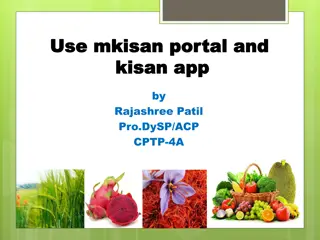PD Portal - Features, Changes, and Instructions
The PD Portal facilitates discussions, debates, and transactions including issuing cheques, obtaining ledger balances, and banking integration. Financial year end changes, shifted cases, and further instructions are highlighted for better management.
Download Presentation

Please find below an Image/Link to download the presentation.
The content on the website is provided AS IS for your information and personal use only. It may not be sold, licensed, or shared on other websites without obtaining consent from the author.If you encounter any issues during the download, it is possible that the publisher has removed the file from their server.
You are allowed to download the files provided on this website for personal or commercial use, subject to the condition that they are used lawfully. All files are the property of their respective owners.
The content on the website is provided AS IS for your information and personal use only. It may not be sold, licensed, or shared on other websites without obtaining consent from the author.
E N D
Presentation Transcript
Chapter 10 Objects and Classes CS1: Java Programming Colorado State University Original slides by Daniel Liang Modified slides by Kris Brown Liang, Introduction to Java Programming, Tenth Edition, (c) 2015 Pearson Education, Inc. All rights reserved. 1
Motivations Suppose you want to develop a graphical user interface as shown below. How do you program it? Liang, Introduction to Java Programming, Tenth Edition, (c) 2015 Pearson Education, Inc. All rights reserved. 2
OO Programming Concepts Object-oriented programming (OOP) involves programming using objects. An object represents an entity in the real world that can be distinctly identified. For example, a student, a desk, a circle, a button, and even a loan can all be viewed as objects. Liang, Introduction to Java Programming, Tenth Edition, (c) 2015 Pearson Education, Inc. All rights reserved. 3
Classes (Cookie Cutters) Classes are constructs that define objects of the same type. A Java class uses variables to define data fields and methods to define behaviors. Additionally, a class provides a special type of methods, known as constructors, which are invoked to construct objects from the class. Liang, Introduction to Java Programming, Tenth Edition, (c) 2015 Pearson Education, Inc. All rights reserved. 4
Classes Liang, Introduction to Java Programming, Tenth Edition, (c) 2015 Pearson Education, Inc. All rights reserved. 5
UML Class Diagram Liang, Introduction to Java Programming, Tenth Edition, (c) 2015 Pearson Education, Inc. All rights reserved. 6
Objects (Cookies) An object has a unique identity, state, and behavior. The state of an object consists of a set of data fields (also known as properties) with their current values. The behavior of an object is defined by a set of methods. Liang, Introduction to Java Programming, Tenth Edition, (c) 2015 Pearson Education, Inc. All rights reserved. 7
Objects An object has both a state and behavior. The state defines the object, and the behavior defines what the object does. Liang, Introduction to Java Programming, Tenth Edition, (c) 2015 Pearson Education, Inc. All rights reserved. 8
Your turn! Write 1 class describing something in the classroom Write 1 class describing something on campus Liang, Introduction to Java Programming, Tenth Edition, (c) 2015 Pearson Education, Inc. All rights reserved. 9
Example: Defining Classes and Creating Objects Objective: Demonstrate creating objects, accessing data, and using methods: Circles. Let s go study it. TestSimpleCircle Run Run TestSimpleCircle Your turn! Also print the perimeter for each circle. Liang, Introduction to Java Programming, Tenth Edition, (c) 2015 Pearson Education, Inc. All rights reserved. 10
Example: Defining Classes and Creating Objects TV TV Let s go look . . . TestTV Run Run TestTV Liang, Introduction to Java Programming, Tenth Edition, (c) 2015 Pearson Education, Inc. All rights reserved. 11
Lecture 2 Liang, Introduction to Java Programming, Tenth Edition, (c) 2015 Pearson Education, Inc. All rights reserved. 12
Constructors, cont. A constructor with no parameters is referred to as a no-arg constructor or default constructor. Constructors must have the same name as the class itself. Constructors do not have a return type not even void. Constructors are invoked using the new operator when an object is created. Constructors play the role of initializing objects. Liang, Introduction to Java Programming, Tenth Edition, (c) 2015 Pearson Education, Inc. All rights reserved. 13
Constructors Constructors are a special kind of methods that are invoked to construct objects. Circle() { } Circle(double newRadius) { radius = newRadius; } Liang, Introduction to Java Programming, Tenth Edition, (c) 2015 Pearson Education, Inc. All rights reserved. 14
Default Constructor A class may be defined without constructors. In this case, a no-arg constructor with an empty body is implicitly defined in the class. This constructor, called a default constructor, is provided automatically only if no constructors are explicitly defined in the class. Liang, Introduction to Java Programming, Tenth Edition, (c) 2015 Pearson Education, Inc. All rights reserved. 15
Creating Objects Using Constructors new ClassName(); Example: new Circle(); new Circle(5.0); Liang, Introduction to Java Programming, Tenth Edition, (c) 2015 Pearson Education, Inc. All rights reserved. 16
Declaring Object Reference Variables To reference an object, assign the object to a reference variable. To declare a reference variable, use the syntax: ClassName objectRefVar; Example: Circle myCircle; Liang, Introduction to Java Programming, Tenth Edition, (c) 2015 Pearson Education, Inc. All rights reserved. 17
Declaring/Creating Objects in a Single Step ClassName objectRefVar = new ClassName(); Create an object Assign object reference Example: Circle myCircle = new Circle(); Liang, Introduction to Java Programming, Tenth Edition, (c) 2015 Pearson Education, Inc. All rights reserved. 18
Accessing Objects Members Referencing the object s data: objectRefVar.data e.g., myCircle.radius Invoking the object s method: objectRefVar.methodName(arguments) e.g., myCircle.getArea() Liang, Introduction to Java Programming, Tenth Edition, (c) 2015 Pearson Education, Inc. All rights reserved. 19
animation Trace Code Declare myCircle Circle myCircle = new Circle(5.0); no value myCircle Circle yourCircle = new Circle(); yourCircle.radius = 100; Liang, Introduction to Java Programming, Tenth Edition, (c) 2015 Pearson Education, Inc. All rights reserved. 20
animation Trace Code, cont. Circle myCircle = new Circle(5.0); no value myCircle Circle yourCircle = new Circle(); yourCircle.radius = 100; Create a circle Liang, Introduction to Java Programming, Tenth Edition, (c) 2015 Pearson Education, Inc. All rights reserved. 21
animation Trace Code, cont. Circle myCircle = new Circle(5.0); reference value myCircle Circle yourCircle = new Circle(); Assign object reference to myCircle yourCircle.radius = 100; Liang, Introduction to Java Programming, Tenth Edition, (c) 2015 Pearson Education, Inc. All rights reserved. 22
animation Trace Code, cont. Circle myCircle = new Circle(5.0); reference value myCircle Circle yourCircle = new Circle(); yourCircle.radius = 100; no value yourCircle Declare yourCircle Liang, Introduction to Java Programming, Tenth Edition, (c) 2015 Pearson Education, Inc. All rights reserved. 23
animation Trace Code, cont. Circle myCircle = new Circle(5.0); reference value myCircle Circle yourCircle = new Circle(); yourCircle.radius = 100; no value yourCircle Create a new Circle object Liang, Introduction to Java Programming, Tenth Edition, (c) 2015 Pearson Education, Inc. All rights reserved. 24
animation Trace Code, cont. Circle myCircle = new Circle(5.0); reference value myCircle Circle yourCircle = new Circle(); yourCircle.radius = 100; reference value yourCircle Assign object reference to yourCircle Liang, Introduction to Java Programming, Tenth Edition, (c) 2015 Pearson Education, Inc. All rights reserved. 25
animation Trace Code, cont. Circle myCircle = new Circle(5.0); reference value myCircle Circle yourCircle = new Circle(); yourCircle.radius = 100; reference value yourCircle Change radius in yourCircle Liang, Introduction to Java Programming, Tenth Edition, (c) 2015 Pearson Education, Inc. All rights reserved. 26
Reference Data Fields The data fields can be of reference types. For example, the following Student class contains a data field name of the String type. public class Student { String name; // name has default value null int age; // age has default value 0 boolean isScienceMajor; // isScienceMajor has default value false char gender; // c has default value '\u0000' } Liang, Introduction to Java Programming, Tenth Edition, (c) 2015 Pearson Education, Inc. All rights reserved. 27
The null Value If a data field of a reference type does not reference any object, the data field holds a special literal value, null. Liang, Introduction to Java Programming, Tenth Edition, (c) 2015 Pearson Education, Inc. All rights reserved. 28
Default Value for a Data Field The default value of a data field is null for a reference type, 0 for a numeric type, false for a boolean type, and '\u0000' for a char type. public class Test { public static void main(String[] args) { Student student = new Student(); System.out.println("name? " + student.name); System.out.println("age? " + student.age); System.out.println("isScienceMajor? " + student.isScienceMajor); System.out.println("gender? " + student.gender); } } Liang, Introduction to Java Programming, Tenth Edition, (c) 2015 Pearson Education, Inc. All rights reserved. 29
Example Java assigns no default value to a local variable inside a method body. public class Test { public static void main(String[] args) { int x; // x has no default value String y; // y has no default value System.out.println("x is " + x); System.out.println("y is " + y); } } Compile error: variable not initialized Liang, Introduction to Java Programming, Tenth Edition, (c) 2015 Pearson Education, Inc. All rights reserved. 30
Differences between Variables of Primitive Data Types and Object Types Liang, Introduction to Java Programming, Tenth Edition, (c) 2015 Pearson Education, Inc. All rights reserved. 31
Copying Variables of Primitive Data Types and Object Types Liang, Introduction to Java Programming, Tenth Edition, (c) 2015 Pearson Education, Inc. All rights reserved. 32
Garbage Collection As shown in the previous figure, after the assignment statement c1 = c2, c1 points to the same object referenced by c2. The object previously referenced by c1 is no longer referenced. This object is known as garbage. Garbage is automatically collected by JVM. Liang, Introduction to Java Programming, Tenth Edition, (c) 2015 Pearson Education, Inc. All rights reserved. 33
The Date Class Java provides a system-independent encapsulation of date and time in the java.util.Date class. You can use the Date class to create an instance for the current date and time and use its toString method to return the date and time as a string. Liang, Introduction to Java Programming, Tenth Edition, (c) 2015 Pearson Education, Inc. All rights reserved. 34
The Date Class Example For example, the following code java.util.Date date = new java.util.Date(); System.out.println(date.toString()); displays a string like Sun Mar 09 13:50:19 EST 2003. Liang, Introduction to Java Programming, Tenth Edition, (c) 2015 Pearson Education, Inc. All rights reserved. 35
The Random Class You have used Math.random() to obtain a random double value between 0.0 and 1.0 (excluding 1.0). A more useful random number generator is provided in the java.util.Random class. Liang, Introduction to Java Programming, Tenth Edition, (c) 2015 Pearson Education, Inc. All rights reserved. 36
The Random Class Example If two Random objects have the same seed, they will generate identical sequences of numbers. For example, the following code creates two Random objects with the same seed 3. Random random1 = new Random(3); System.out.print("From random1: "); for (int i = 0; i < 10; i++) System.out.print(random1.nextInt(1000) + " "); Random random2 = new Random(3); System.out.print("\nFrom random2: "); for (int i = 0; i < 10; i++) System.out.print(random2.nextInt(1000) + " "); From random1: 734 660 210 581 128 202 549 564 459 961 From random2: 734 660 210 581 128 202 549 564 459 961 Liang, Introduction to Java Programming, Tenth Edition, (c) 2015 Pearson Education, Inc. All rights reserved. 37
Caution Recall that you use Math.methodName(arguments) (e.g., Math.pow(3, 2.5)) to invoke a method in the Math class. Can you invoke getArea() using SimpleCircle.getArea()? NO! All the methods used before this chapter are static methods, which are defined using the static keyword, and not associated with objects. However, getArea() is non-static, and associated with a particular object and invoked using objectRefVar.methodName(arguments) (e.g., myCircle.getArea()). Liang, Introduction to Java Programming, Tenth Edition, (c) 2015 Pearson Education, Inc. All rights reserved. 38
Static A way of sharing variables, constants, and methods. We use ONE static Math class, like a library. Static variables are shared by all the instances of the class. Static methods are not tied to a specific object. Static constants are final variables shared by all the instances of the class. Liang, Introduction to Java Programming, Tenth Edition, (c) 2015 Pearson Education, Inc. All rights reserved. 39
Static Variables, Constants, and Methods, cont. To declare static variables, constants, and methods, use the static modifier. Liang, Introduction to Java Programming, Tenth Edition, (c) 2015 Pearson Education, Inc. All rights reserved. 40
Objects: Instance Variables, and Methods Instance variables belong to a specific object. Instance methods are invoked by an instance of the class. Instance variables and methods are specified by omitting the static keyword. Liang, Introduction to Java Programming, Tenth Edition, (c) 2015 Pearson Education, Inc. All rights reserved. 41
Static Variables, Constants, and Methods, cont. Liang, Introduction to Java Programming, Tenth Edition, (c) 2015 Pearson Education, Inc. All rights reserved. 42
Example of Using Instance and Class Variables and Method Objective: Demonstrate the roles of instance and class variables and their uses. This example adds a class variable numberOfObjects to track the number of Circle objects created. CircleWithStaticMembers CircleWithStaticMembers Run TestCircleWithStaticMembers Run TestCircleWithStaticMember s Liang, Introduction to Java Programming, Tenth Edition, (c) 2015 Pearson Education, Inc. All rights reserved. 43
Static numberOfObjects is shared by ALL objects because it is specified as static; whereas, radius is an instance variable that is only used in the instance of an object to store the value for that object. Liang, Introduction to Java Programming, Tenth Edition, (c) 2015 Pearson Education, Inc. All rights reserved. 44
Modifiers Liang, Introduction to Java Programming, Tenth Edition, (c) 2015 Pearson Education, Inc. All rights reserved. 45
Visibility Modifiers and Accessor/Mutator Methods By default, the class, variable, or method can be accessed by any class in the same package. public The class, data, or method is visible to any class in any package. private The data or methods can be accessed only by the declaring class. The get and set methods are used to read and modify private properties. Liang, Introduction to Java Programming, Tenth Edition, (c) 2015 Pearson Education, Inc. All rights reserved. 46
The private modifier restricts access to within a class, the default modifier restricts access to within a package, and the public modifier enables unrestricted access. Liang, Introduction to Java Programming, Tenth Edition, (c) 2015 Pearson Education, Inc. All rights reserved. 47
The default modifier on a class restricts access to within a package, and the public modifier enables unrestricted access. Liang, Introduction to Java Programming, Tenth Edition, (c) 2015 Pearson Education, Inc. All rights reserved. 48
NOTE An object cannot access its private members, as shown in (b). It is OK, however, if the object is declared in its own class, as shown in (a). Liang, Introduction to Java Programming, Tenth Edition, (c) 2015 Pearson Education, Inc. All rights reserved. 49
Why Data Fields Should Be private? To protect data. To make code easy to maintain. Liang, Introduction to Java Programming, Tenth Edition, (c) 2015 Pearson Education, Inc. All rights reserved. 50
